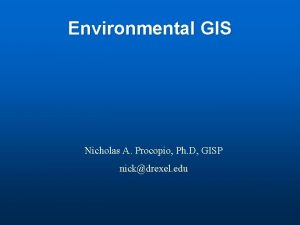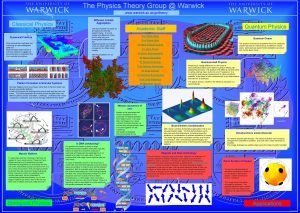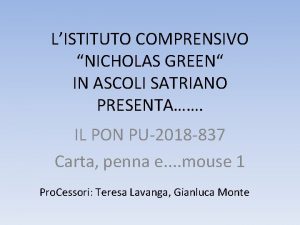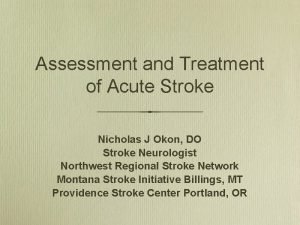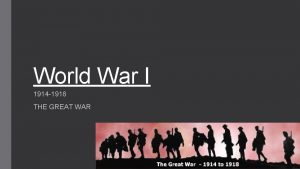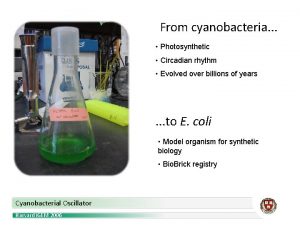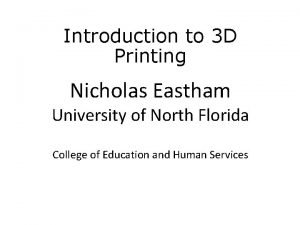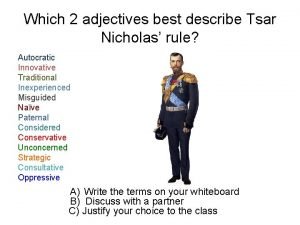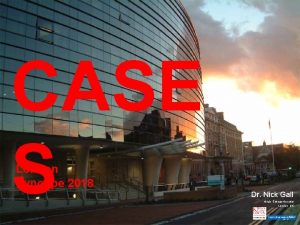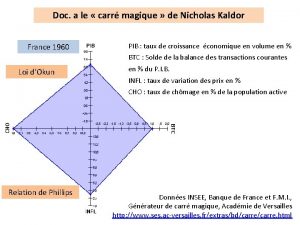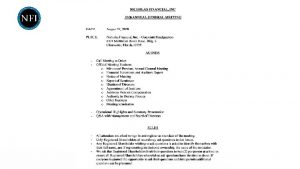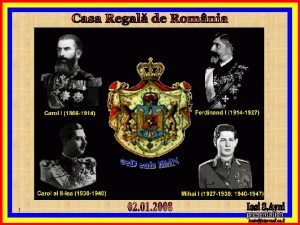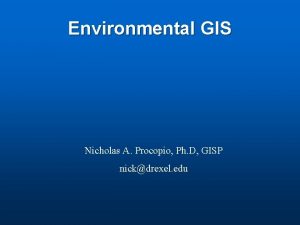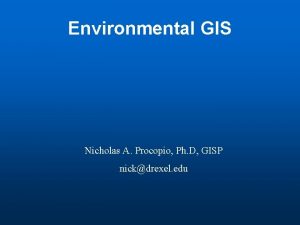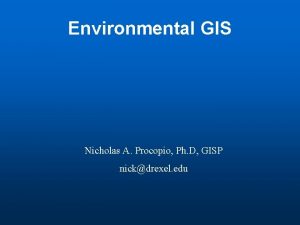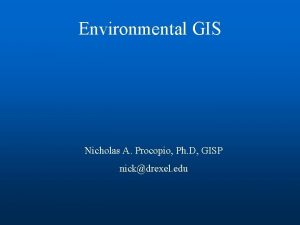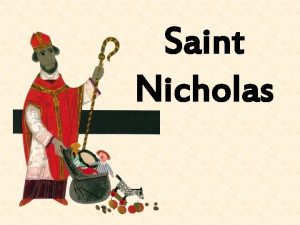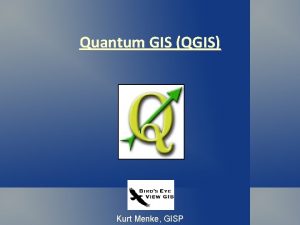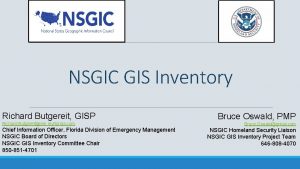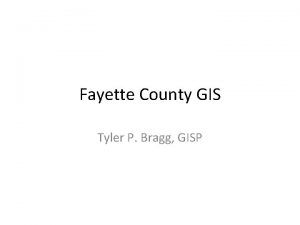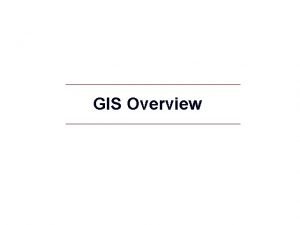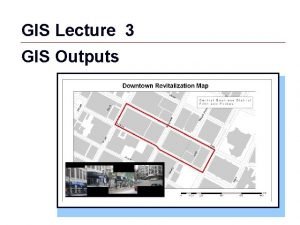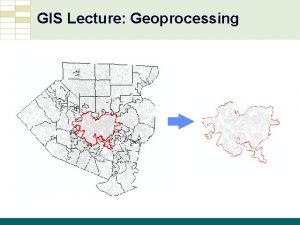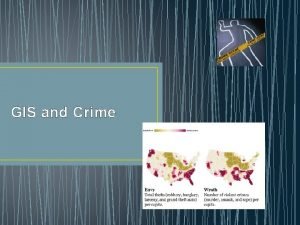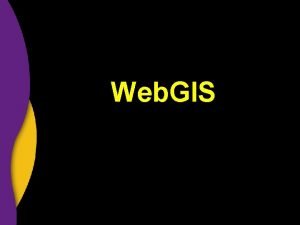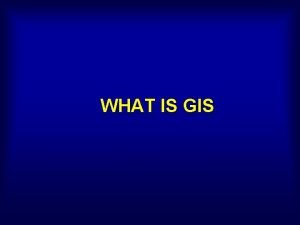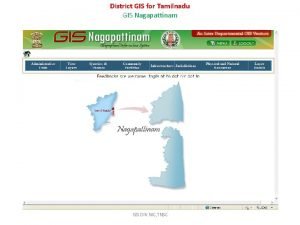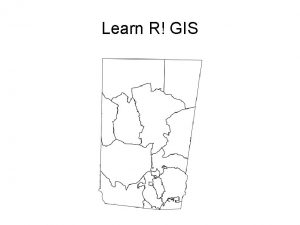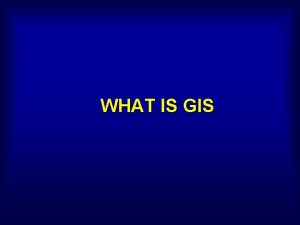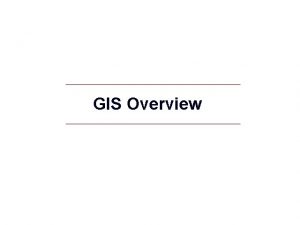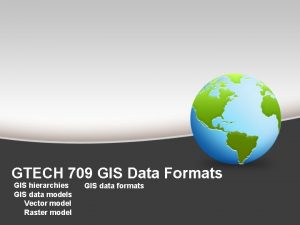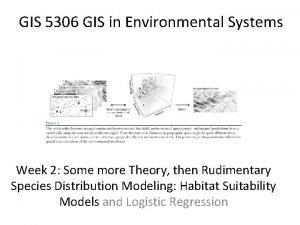Environmental GIS Nicholas A Procopio Ph D GISP







































- Slides: 39

Environmental GIS Nicholas A. Procopio, Ph. D, GISP nick@drexel. edu

Map Review n A map is defined as a representation, normally to scale and on a flat medium, of a selection of material or abstract features on, or in relation to, the surface of the Earth.

Map Characteristics n n n Usually out of date Show only a static situation – one slice of time Often elegant/artistic (much more so in distant past, more functional in recent times)

History of Maps n n n Earliest direct evidence of mapping comes from the middle east. Thought to be Babylonian clay tablets that depict the earth as a flat circular disk Most date it as 2, 3002, 500 B. C.

Early Views of the Earth n n n Thales (625 -547 BC) proposes a disc on an ocean Anaximander (611 – 554 BC) proposes a cylinder with the land curving on its surface Pythagoras (6 th century) – proposes a sphere due to geometrical perfection.

Early View of the Earth n n Cartography became considerably advanced in ancient Greece. The concept of a spherical Earth was well known among Greek philosophers by the time of Aristotle (ca. 350 B. C. ) and has been accepted by geographers since.

Conceptualizing the Earth n n n Eratosthenes (276 – 195 BC) first calculated the circumference of the earth. Value was determined to be 24, 663 - 27, 967 miles Actual value is 24, 902 miles

Conceptualizing the Earth n Ptolomey • Defined the elements and form of scientific cartography • Created first projection in 150 AD

Ptolemy’s Projection

Ptolemy’s View of the World n n n Ptolemy promulgated a value for the circumference of the earth much less than the actual number This would have a significant impact on human history By observing Ptolemy’s work, it appeared to Columbus that Asia was much closer to Europe

Early Map Forms n n n As Europe entered the Dark Ages, the ideas about the shape of the earth were gradually lost. In Europe, the view of the earth is based primarily on theologic premises. The map became a religious statement as opposed to a geographic tool. Many outlying areas are decorated with religious symbols and mythical figures.

Early Arabic Maps n n Al-Idrisi was the leading mapmaker of the Middle Ages His world map (shown with south oriented at the top) was world renown

Early Maps n Early European explorers often drew maps of newly discovered coastlines.

Mercator n n In the 16 th Century, Mercator created the Mercator projection Allows mariners to sail to their destinations by following a rhumb line

n A rhumb line is a line or direction on the surface of the earth that follows a single compass bearing and makes the same angle with all meridians, resulting in a curved spiraling toward the poles

Early Maps n n Waldseemüller's world map, 1507 The first map to incorporate New World discoveries.

Advancements in Cartography n n In the late 17 th Century, Newton proposes that the earth is not a true sphere but an oblate spheroid Proposal submitted as a corollary to his theory of gravitation

Advancements in Cartography n n n In the late 17 th Century and early 18 th century, measurements of degrees of latitude support Newton’s proposal that the earth is an oblate spheroid The length of a degree of latitude decreases northward, suggesting the earth flattens toward the top Soon after the establishment of degrees of latitude, degrees of longitude are established

Greenwich Prime Meridian n n The Prime Meridian, the first line of longitude, was established in 1884 The prime meridian was established as a means of developing a navigational and timekeeping standard, as the pace of development and travel accelerated in the 19 th century

Greenwich Prime Meridian n In 1884, 25 countries reached agreement at a conference in Washington, USA, that the Greenwich Meridian would be adopted as the `Prime Meridian' (zero degrees) from which time could be set and from which other points of longitude could be calculated

Greenwich Prime Meridian n Before the establishment of the prime meridian in 1884, almost every town in the world kept its own local time!

Advancements in Cartography n n In the 18 th Century, there is a rapid expansion of thematic mapping Various layers of spatial data on a series of similar base maps • 18 th Century maps of the Battle of Yorktown, drawn by French cartographer Louis. Alexandre Berthier contained hinged overlays to show troop movement.

Types of Maps n Reference map • Shows the simplest properties of the map data • Often display political boundaries, streams, roads, and towns n Thematic map • Show colored, grouped, or coded information on a particular theme

Types of Maps n Topographic - a reference tool, showing the outlines of selected natural and man-made features of the Earth

Types of Maps n Thematic map - a tool to communicate geographical concepts such as the distribution of population densities, climate, movement of goods, land use etc.

Chloropleth Maps n Choropleth map - uses reporting zones such as counties or census tracts to show data such as average incomes, percent female, or rates of mortality

Isopleth Maps n Isopleth map shows an imaginary surface by means of lines joining points of equal value, "isolines"

Area Class Maps n Area class map - shows zones of constant attributes, such as vegetation, soil type, or forest species

Other Types of Maps n Graduated symbol map • Symbols locate features and the size of the symbol correlates to the value of the feature

Other Types of Maps n Dot map • Dots depict locations of features

Map Features n n n n Title Symbols Legend North Arrow Place-names Credits Inset Scale

Symbols n Map symbols are the representations of the real-world features. The mapmaker can assign a certain symbol to represent a feature but most maps follow a specific guideline for representing features.

Map Representations

Legend n n The legend lists the symbols used on a map and what they depict The symbols should appear on the legend exactly as they do on the map

North Arrow n n n The question of “what is north” can be an issue on some maps The earth has a “true” north and a “magnetic” north Most maps reference true north

Inset n n Occasionally, data and observations may be densely cluttered in small sections of a map. The mapmaker provides insets to zoom in to these cluttered locations

Scale n n n The amount of reduction that occurs when taking the real world and expressing it as a map In most maps, scale is extremely important Scale can be indicated by • • • Verbal (1 inch equals 2000 feet) Numeric (1: 24, 000) Graphic

Scale n n n Large scale map features are relatively large. Small scale map features are relatively small. Large Scale Small Scale 1: 1000 1: 250000

Scale Small Scale Large Scale More Detail 1: 24, 000 <-----> 1: 100, 000 1: 500, 000 Less Detail 1: 1, 000
 Dominick procopio
Dominick procopio Nick procopio
Nick procopio Mh 605
Mh 605 Nicholas d'ambrumenil
Nicholas d'ambrumenil Ic ascoli satriano
Ic ascoli satriano Evolution of the contemporary political pattern
Evolution of the contemporary political pattern Nicholas gardner
Nicholas gardner Nicholas okon do
Nicholas okon do King george cousins family tree
King george cousins family tree Nicholas edward stroustrup
Nicholas edward stroustrup Nicholas seeliger, md flpen panama city beach
Nicholas seeliger, md flpen panama city beach Nicholas shunda
Nicholas shunda Charles nicholas umbc
Charles nicholas umbc Nicholas tunney
Nicholas tunney Nicholas solomos md
Nicholas solomos md Eugene khandros
Eugene khandros Nicholas bloom stanford
Nicholas bloom stanford Stim orai
Stim orai Three golden balls
Three golden balls Christos pcb
Christos pcb Nicholas lintzeris
Nicholas lintzeris Nicholas spykman rimland theory
Nicholas spykman rimland theory Nicholas eastham
Nicholas eastham Ted nicholas net worth
Ted nicholas net worth Nicholas ruozzi
Nicholas ruozzi Nicholas carlini
Nicholas carlini Define czar nicholas ii
Define czar nicholas ii Nicholas possessive
Nicholas possessive Dr nicholas gall
Dr nicholas gall Marché des fonds prêtables taux d'intérêt
Marché des fonds prêtables taux d'intérêt Nicholas shunda
Nicholas shunda Three world order
Three world order Lightweight vs heavyweight framework
Lightweight vs heavyweight framework Constructivism and anarchy
Constructivism and anarchy Nicholas financial las vegas
Nicholas financial las vegas P-11212
P-11212 St.bernadette school
St.bernadette school Alexandru ioan cuza
Alexandru ioan cuza Nicholas moeller
Nicholas moeller Dr nicholas gibbins
Dr nicholas gibbins

